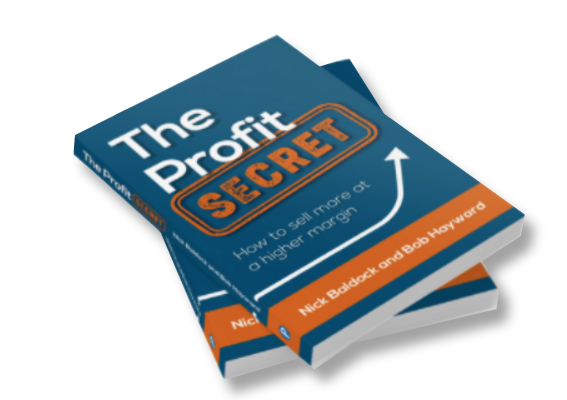Why Direction Beats Speed Every Time

"Direction is more important than speed. Every mile in the wrong direction is a two mile error back to where we were to begin with."
I was chatting with a client last week - a brilliant MD who'd been working 70-hour weeks for months. His team was flat out, hitting every deadline, ticking every box. And when I asked him where all this frantic activity was taking his business, he went quiet.
"We're incredibly busy," he said. "But I'm not sure we're getting anywhere."
Sound familiar?
The Busy Trap
Here's what I've learned from my original Coach (John Fitzpatrick) and after coaching hundreds of business leaders: being busy isn't the same as being effective. In fact, it's often the opposite.
"Complexity kills execution" - and nothing creates complexity like rushing in the wrong direction.
I see this everywhere. Teams sprinting towards targets that don't matter. Departments working at cross-purposes. Brilliant people burning out on work that adds no real value.
The pharmaceutical giant Merck discovered this the hard way. They spent years perfecting a cholesterol drug, pouring millions into development and marketing. Fast execution, impressive dedication. Problem was, by the time they launched, the market had moved on.
All that speed, all in the wrong direction.
The Power of the Pause
"How would you approach this if you only had 20% of the time?"
This question stops people in their tracks. Suddenly, they're forced to think about what matters. What really matters.
When I work with leadership teams, I often start with this exercise. Yes, look at the top 4% and the top 20% of your priorities while also check out the bottom 30% of your tasks on your never ending To Do List and the bottom 30% of your responsibilities. They are highly likely to be wasting 50% of your time.
What is you stripped away 80% of what you're doing. What's left? Your top 20%. That's probably where your real impact lies, isn’t it?
Amazon's Jeff Bezos built this thinking into their culture. Every new initiative must answer one question: "Will this still matter in ten years?" If not, it doesn't get the resources.
If all the effort does not really matter you are wasting your effort, time and money. Stop. The direction is wrong.
The North Star Principle
"We must have a clear and compelling vision that we keep front of mind constantly."
Your vision isn't a poster on the wall - it's your navigation system. Your compass. Every decision, every priority, every use of time should connect back to where you're trying to go.
I remember working with a manufacturing company that was struggling with focus. They had seventeen "strategic priorities." Seventeen! When everything's a priority, nothing is.
We spent a morning getting clear on their actual destination. By lunch, those seventeen priorities had become three. Six months later, they'd hit their best quarterly results in five years.
The Courage to Say No
"There are times in life when you must say no to your wishes and wants so that you can focus on your needs."
This is where leadership gets tough. Good opportunities will always outnumber your capacity to pursue them. The question isn't whether something's worth doing - it's whether it's worth doing instead of something else.
I've seen too many businesses chase every shiny opportunity that comes along. They end up like that person at a buffet trying to fit everything on their plate - it looks impressive until it all falls off.
If you chase two rabbits you rarely catch one. One overall direction. One overall destination.
The Feedback Loop
"If you find yourself going back to re-evaluate previous decisions it means that you guessed the first time."
Here's the thing about direction - you can't set it once and forget it. Markets shift, circumstances change, new information emerges. Retaining a clear focus beyond 90 days is tough.
The best leaders I know build review points into their plans. Not because they expect to fail, they review frequently because they expect to learn. A rocket to the Moon is likely only on track 2% of the time and still gets there, because it re-assesses and “course-corrects” as a standard operating procedure. The goal remains the same. The mission remains the same. While the means to get there can and does need to change.
Google famously kills projects that aren't working, even when they've invested heavily. Google+ cost them millions, but they pulled the plug when it became clear it wasn't going where they needed it to go. That's not failure – that is smart navigation.
The reviews support the original decision. This is our goal, our mission, our purpose. That decision you’d review less often. Maybe annually. The route you are taking, the methods and strategies and tactics. Yes, measure the lead and lag measure weekly and review them quarterly.
Making It Practical
So how do you ensure you're heading in the right direction?
Begin with the end in mind – as Stephen Covey said. Where do you want your business to be in three years? Not where you think it should be, or where your competitors are going, or even where your customers are going (because you may want to consider your non-customers more). Where do you want to be?
Question everything regularly. I recommend quarterly direction reviews. A 90-day review needs to be a Standard Operating Procedure (SOP). And the more you think you don’t need one “this quarter” the more you do. Are we still heading where we want to go? What have we learned that might suggest a change of course would be beneficial?
Get comfortable with stopping. "Lots of things in life are not necessarily wrong they are simply not necessary." What are you doing that falls into this category?
Measure what matters. Speed metrics are easy - revenue, activity, output. Direction metrics are harder AND more important - customer satisfaction, market position, team engagement.
The Compound Effect: Where True Leadership Legacy Lives
"Preparation always precedes promotion. Allow yourself time to grow."
Here's the beautiful thing about getting direction right - the compound effect is massive. A small course correction early on can save you years of wasted effort later.
Consider Warren Buffett, who built his empire not through frantic trading, but through patient, directionally sound investment decisions. Or take Amazon's Jeff Bezos, who famously prioritised long-term customer satisfaction over quarterly profits - a directional choice that compounded into one of the world's most valuable companies.
The mathematics of direction are unforgiving. If you're heading 10 degrees off course, after just 60 miles you'll be a full mile away from your intended destination. In business terms, that's the difference between sustainable growth and expensive pivots.
I think about the leaders I most admire. They're not the ones who moved fastest - they're the ones who moved most purposefully. They understood that in business, as in life, it's not about the speed of your journey, it's about the wisdom of your destination.
Here's what separates exceptional leaders from the merely competent: they recognise that direction isn't a one-time decision. It's a daily discipline. Every morning, they ask themselves: "Are we still heading towards our true north?" They build systems that keep them on course, even when market pressures demand immediate action.
The compound effect works both ways. Get your direction right, and small daily improvements create exponential results. Get it wrong, and you compound your problems at the same rate. The choice, as always, is yours.
Your business doesn't need another quick fix. No business does. It needs the courage to choose direction over speed, purpose over pressure, and long-term value over short-term validation.
The question isn't whether you can afford to slow down and get your direction right. The question is: can you afford not to?
Ready to check your direction? Our business health check can help you identify where you're heading and whether it's where you want to go. Sometimes the most productive thing you can do is pause, reflect, and recalibrate.
For more information please send a message via the Contact Us Page. Or you can register for an upcoming webinar.


